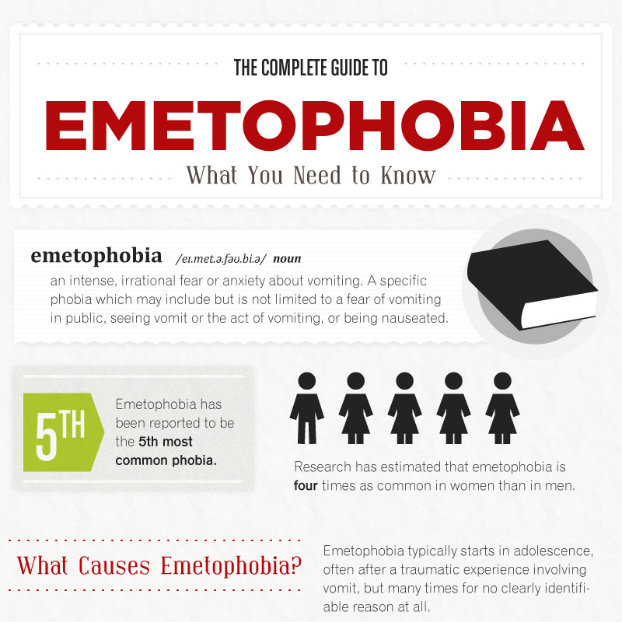 Ever feel fine as you’re rambling around minding your own business but then you walk into a room thick with tension and you note your own anxiety and stress levels start going through the roof? That’s because anxiety and stress appear to be highly contagious.
Ever feel fine as you’re rambling around minding your own business but then you walk into a room thick with tension and you note your own anxiety and stress levels start going through the roof? That’s because anxiety and stress appear to be highly contagious.
When you’re on your own, you are typically hit with anxiety or stress that match your own temperament and tendencies. But all that can change when you are with a group. Regardless of your natural anxiety or stress tendencies from your emetophobia or daily life, group members are likely to take on the group mentality of high anxiety and stress.
But don’t take it from us; take it from barn owls and voles.
Meet Contagious Anxiety
A study published in Behavioural Brain Research as well as Neuroscience and Biobehavioral Reviews took the group anxiety theory to task by checking out anxiety levels in voles, which are small rodents that are eaten by barn owls in the wild.
The study consisted of measuring the anxiety levels of voles by dividing 30 of the small rodents into three groups of 10 voles each. The first part of the study established the baseline anxiety levels of the voles by letting them hang out in a peaceful environment. Each voles was free to roam out into the open or stay in its protected environment, and those who chose more time in the protected environment were considered to have higher anxiety levels.
Makes sense.
The next step was subjecting the voles to a high-anxiety situation, which consisted of leaving the voles safe in their cage but subjecting them to one of their top predators: the barn owl. Each cage full of 10 voles were placed inside an enclosure containing barn owls that were free to swoop at and grab meat placed atop of the vole cage, thereby subjecting the voles to the experience of being attacked throughout the night.
The following day, the voles were once again placed in the peaceful environment, at which time the entire group exhibited identical levels of anxiety. This was a far cry from what happened with voles that were subjected to the owl-swooping individually, instead of in a group. The voles that experienced their own individual experience with the barn owls showed higher levels of anxiety when they were again placed in a peaceful environment. But their anxiety levels were in relation to their baseline anxiety levels, not heightened to an equal level across the board.
‘Common Behavioral Code’ in Action
“Under threat, members of a social group will adopt a common behavioral code, regardless of their individual tendency towards anxiety,” according to the study’s lead researcher Professor David Eilam.
In other words, when a group is exposed to high-anxiety, traumatic situations, the entire group will react with the same high levels of anxiety and stress, even if an individual on his or her own would normally remain pretty calm, cool and collected about it all.
What held true for voles can be seen in humans when we’re faced with tragedies like Sept. 11 or earthquakes, tidal waves and other natural disasters. People typically end up reacting as their fellows do, or as Prof. Eilam puts it, they “stand together and accept a general code of conduct.”
The conduct, however, may differ a bit between males and females, or at least it did during another vole experiment that was part of his vole and barn owl study. After already finding a group of all male voles and a group of all female voles adopted the same high-anxiety level as the rest of their group, Prof. Eilam mixed females in with the male group.
Instead of showing the same super-heightened anxiety levels than they did before, the male voles actually showed lower levels of anxiety when females were present. The females exhibited the same heightened anxiety with or without the males.
Here we see yet another general code of conduct kick in, with the male vole as the protector that immediately assumes his role when females are around. Protectors, of course, can’t let their anxiety levels soar through the roof if they want to be effective.
Meet Contagious Stress
While both stress and anxiety can leave you feeling like you’re about to explode, there are a few nuances between the two. The University of Maryland says stress, which makes you jittery or nervous, can often be traced back to a specific stressor, such as an overloaded schedule or traumatic personal issues. It says anxiety is like stress that sticks around after the stressor is gone, morphing into worry, unease, fear and sometimes coming with no apparent source. You may have met that one with your vomit fears.
Regardless of the nuances, both can be passed along from one person to another. You saw what can happen with group anxiety levels, and Psychology Today blogger Sherry Pagoto explores what can happen when you’re around high-stress folks. She does this by pointing out three common types of high-stress individuals:
- Eggshell people
- Stress sponges
- Stress shifters
Eggshell people typically give off this vibe that they are about to break down or erupt at any random moment. Whenever you’re around them you feel compelled to practice the proverbial “walking on eggshells,” which gives rise to their nickname.
Stress sponges seem to make it their life’s work to absorb other people’s stress. They may be down or stressed out for days by the death of a person they didn’t even know, even if they didn’t know the person’s family or friends, either.
Stress shifters are those who are constantly on overload with work, volunteer duties, homemaking tasks, and are quick to shift the stress onto you. They generally do this by trying to shift some of their duties, and therefore some of their stress, squarely on to your shoulders.
Staying in your “protected environment” like the voles may seem like the easiest way to avoid any contact with other humans which, in turn, decreases your chances of encountering contagious anxiety or stress. But you still have the news on TV, the ranting on the radio and the wide-reaching web of the Internet that can continue to infect your home and mind. A better way to deal with it is to set up your own set of strategies that keep anxiety and stress contagions at bay.
Coming Soon: How to Protect Yourself from Contagious Anxiety and Stress
SOURCES:
Photo Credit: h.koppdelaney via Compfight cc





